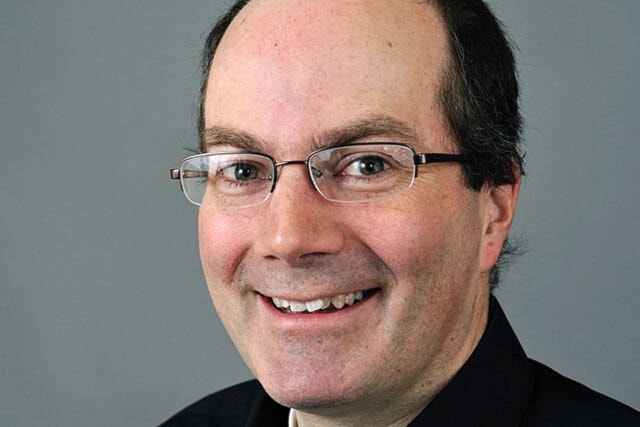Elections are like Christmas for wonks. Instead of presents, Santa leaves brightly coloured party platform documents under the policy tree.
Party platforms can vary widely in detail, rigour and plausibility of successful implementation. Sometimes the party leader has been working with teams of experts for months to put his or her stamp on the next generation of big ideas for the country. Other times, the platform thinking mostly happens on napkins and old pizza boxes at whatever dingy hotel the leader’s communications team is staying at in the days before publication.
With just 0.3 per cent of the seats in the House of Commons, the Yukon is seldom mentioned. But often there are broader policy moves aimed at rural, remote and northern areas from Sudbury to Old Crow.
The platforms sometimes disclose specific nuggets that are important to Yukoners. Or, sometimes just as important, subtly reveal how much the North matters – or not – to the people running the various parties.
In the next two columns, I’m going to have a look at the Yukon-specific elements in the platforms. This column will look at the NDP and Conservatives, and we’ll do the Liberals and Greens next week.
The national platforms include many planks that affect all Canadians, including Yukoners. This includes things like the NDP’s idea for a government-owned phone company to compete with our current mobile phone providers or the Conservative pledge to get one million new homes built in the next three years. But we’ll focus on things specific to the Yukon or the northern territories.
The NDP’s “Ready for Better” plan does not mention the Yukon, but does have 26 references to the North. Nine of these are about reforming the Nutrition North program, which supports affordable food in Old Crow. Many proposals are not Yukon-specific but are aimed at rural, remote and Northern Canada. Many of these are linked to climate change and public services.The North also gets its share of the glossy campaign photos, with a shot of leader Jagmeet Singh in an NDP-orange parka.
There are promises to help Northern communities build locally controlled renewable energy capacity, as well as measures to support more in-person services by government agencies, support for volunteer emergency responders plus rural and First Nation policing. The party proposes an expansion of banking services by the post office in communities it believes are under-served by private banks. It also identifies affordable public transit as a priority. The cancellation of many Greyhound bus routes has inspired the party to propose restoring routes and expanding public transit into under-served areas.
The party also makes commitments to fund Northern economic development, infrastructure and to bring in a tax credit to encourage Northern graduates in designated communities to come home and start their careers.
It doesn’t mention if this would include all Yukon communities or just some.
The NDP platform doesn’t mention Yukon First Nations in particular, but does include commitments to reform the federal fiscal relationship with First Nations to “help close the socio-economic gap and support self-government.”
Most of the NDP proposals are not costed and do not have specific deadlines attached to them, so it is hard to tell how quickly an NDP government would move on them.
The Conservative platform is entitled “Canada’s Recovery Plan.” It’s 160 pages long and will delight policy enthusiasts with page after page of dense bullet points. It mentions the Yukon twice, promising us a “large-scale project to provide clean power.” Party leader Erin O’Toole does not appear in any Northern-themed photos, but Tory visual designers have scattered photos of icebergs, polar bears and the Northern Lights throughout.
The Conservatives dedicate a four-page chapter to the North. It is not Yukon-specific but gives some insights into how the party thinks about our part of the country, saying that “Canada’s Conservatives will make capacity building, economic reconciliation, and sovereignty expression core priorities of our approach to the North.”
It says a Conservative government will be more respectful of territorial governments and Indigenous peoples, completing devolution and seeking meaningful consultation. Examples include allowing the territories to set their own borrowing limits, like a province, and ensuring that development decisions in the North will be made by Northerners and not Ottawa.
This is probably a reference to things like the 2016 federal decision on oil and gas development in the Yukon offshore, which was announced without consultation with the Yukon government or Yukon First Nations.
The Conservatives don’t mention Yukon self-government in particular, but there is a six page chapter on Indigenous reconciliation. It includes commitments to give Indigenous communities more control over things like federal housing programs, plus measures on Indigenous businesses, jobs, mental health and broadband.
The Tory platform also makes commitments on Northern security, mentioning upgrades to the North Warning System, drone and satellite Arctic surveillance systems and building heavy icebreakers.
It also commits to doubling the Northern residency deduction on your taxes, a Northern Housing Strategy, improving Northern mental health services and reforming Nutrition North. It mentions a range of Northern economic development initiatives, including training programs and eco-tourism opportunities with Parks Canada.
The Conservative platform is not costed, but the party has asked the independent Parliamentary Budget Officer to review its cost estimates. It says it will make the costing public in a future edition of the platform.
Both platforms are worth reading before casting your vote.
Next week, we’ll look at the Liberal and Green platforms.
Keith Halliday is a Yukon economist and author of the MacBride Museum’s Aurore of the Yukon series of historical children’s adventure novels. He is a Ma Murray award-winner for best columnist and received the bronze for Outstanding Columnist in the 2019 Canadian Community Newspaper Awards.
